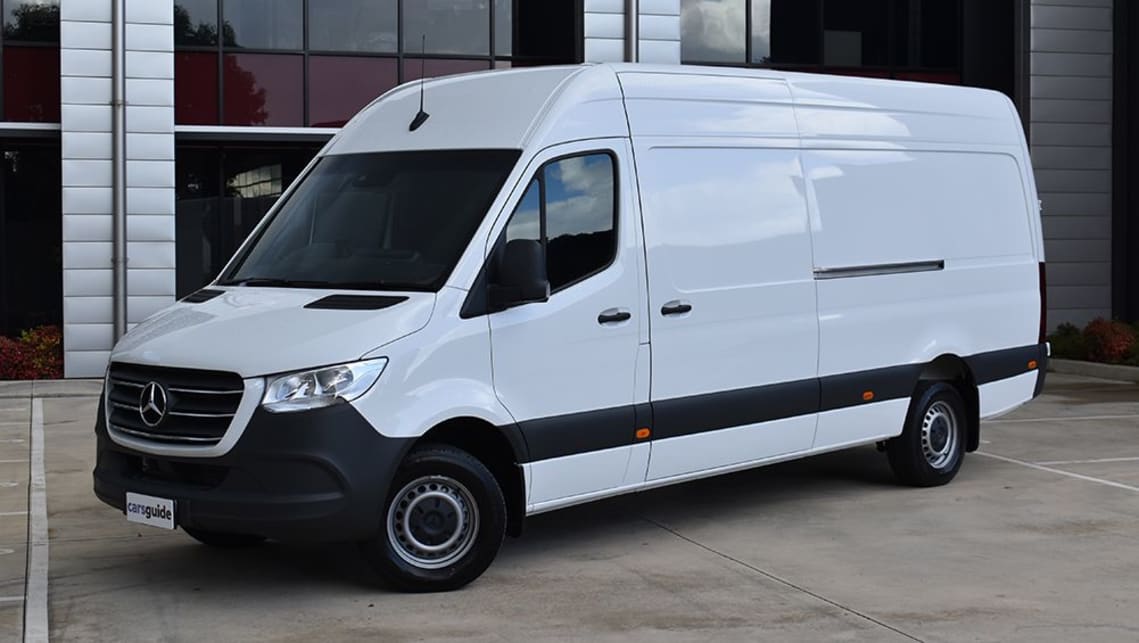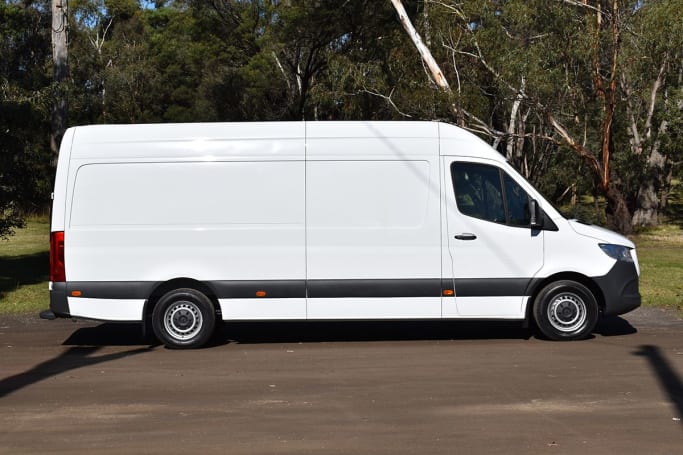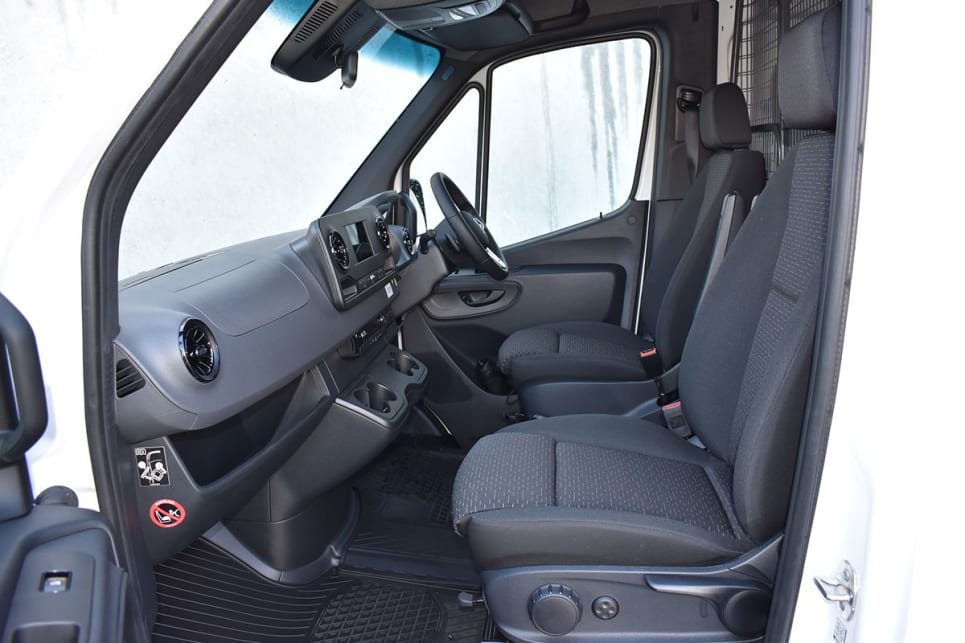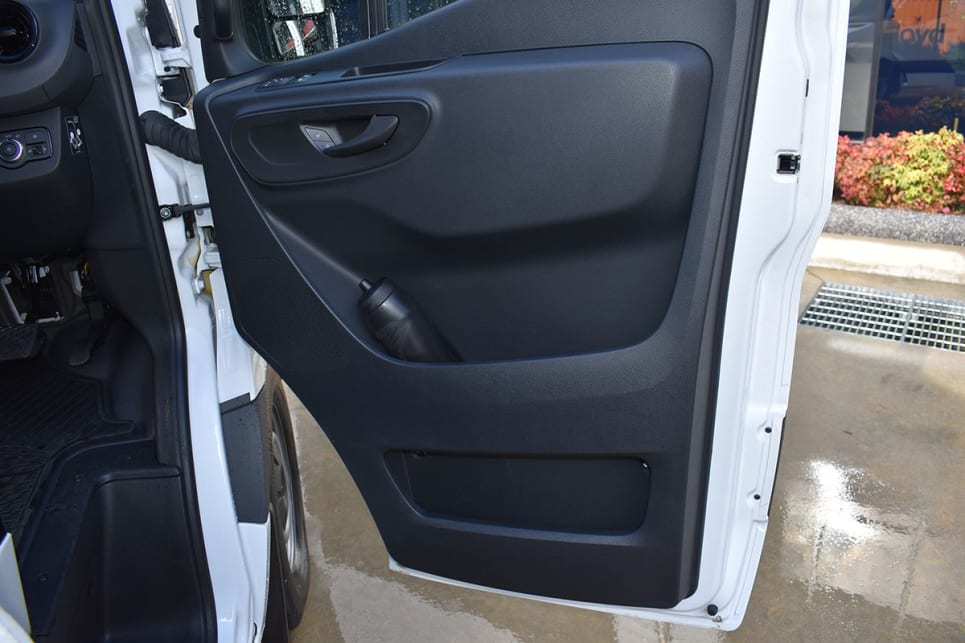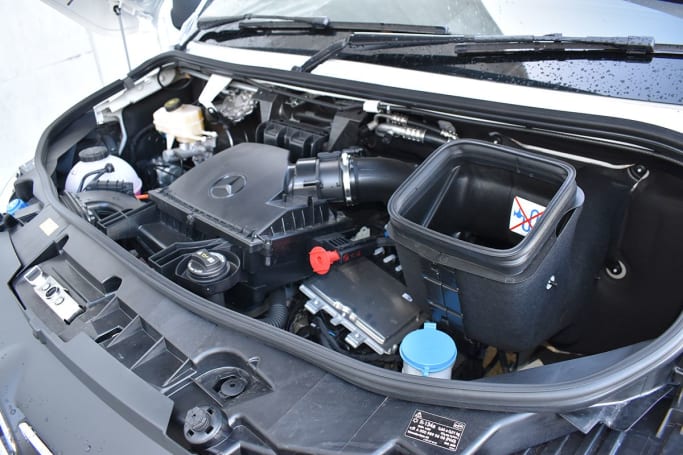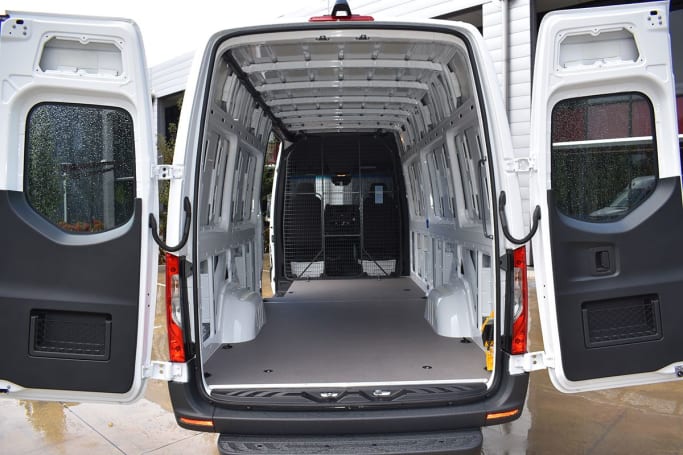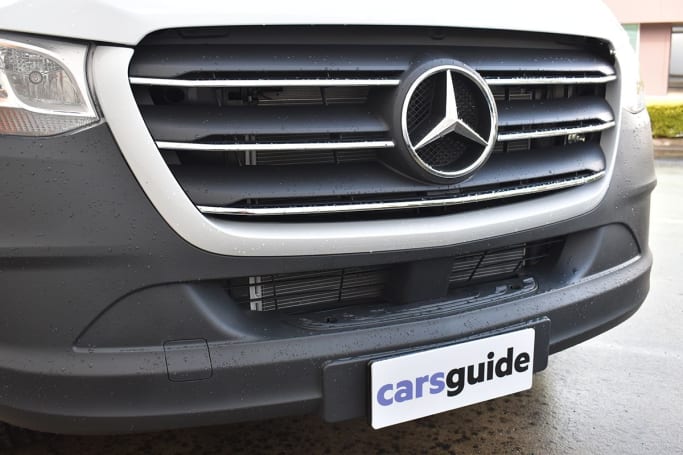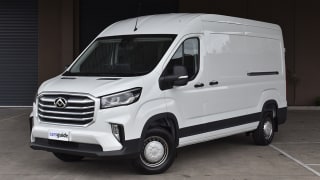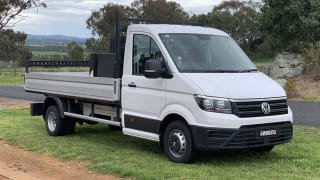Our test vehicle is officially known as the Sprinter 419 Van LWB. It’s equipped with a 2.0-litre four-cylinder turbo-diesel engine, nine-speed automatic transmission, long wheelbase and rear-wheel drive, for a list price of $87,021.
Our example is fitted with the optional 'Campervan Package' (not that we’d choose to camp in an empty shipping container) which brings an upgraded front axle load rating, comfort seat pack with swivel function, chrome grille, additional dash-pad storage bins with hinged lids, long-range 93-litre fuel tank and electronic enhancements.
Ticking this options box costs $2838 which bumps the list price to $89,859. Our test vehicle is also fitted with an accessory mesh-type cargo barrier.

The Sprinter panel van is clearly built for work with its all-weather vinyl cabin floor, 16-inch steel wheels with 235/65R16 tyres and full-size spare, side marker lights and ample dark grey plastic where bumps, scrapes and high wear usually occur including the bumpers, door mirrors/handles and lower body sides.
However, in stark contrast it also offers numerous creature comforts including keyless start, a delightful leather-rimmed and height/reach adjustable steering wheel with paddle-shifters and multiple remote-control functions, as well as heated and power-folding door mirrors with truck-style lower wide-angle views.
There's also a driver’s instrument cluster with colour display, black fabric bucket seats with fold-down inboard armrests and multiple posture adjustments, adaptive cruise control, DRLs and a two-speaker multimedia system with 7.0-inch touchscreen and multiple connectivity including Apple and Android devices.


